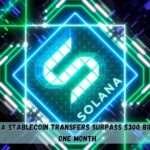Table of Contents
To enrich trading opportunities and widen user market options, Binance has unveiled plans to introduce ten new USDC trading pairs on its spot market, effective from December 28. This strategic move, communicated through a press release on December 27, reinforces Binance’s commitment to cultivating robust markets for its user base.
The newly added trading pairs encompass ADA/USDC, ARB/USDC, AVAX/USDC, DOT/USDC, INJ/USDC, MATIC/USDC, OP/USDC, ORDI/USDC, SOL/USDC, and XRP/USDC. Trading for these pairs is scheduled to commence at 16:00 on December 28, 2023.
Blockchain reporter Colin Wu, sharing this development on X (formerly Twitter), also provided insights into additional information regarding trading pairs that Binance plans to delist soon.

Colin Wu added that Binanc plans to remove the following trading pairs: APE/BNB, APE/EUR, ARPA/ETH, BETA/ETH, CVX/BTC, ENS/BNB, EOS/EUR, ETC/EUR, KAVA/BNB, and PAXG/BNB.
Binance Strengthens USDC Partnerships for Market Enhancement
In line with its commitment to fortifying partnerships involving USDC, Binanc recently announced an extension of its support for the stablecoin on Polygon.
This move, strategically unveiled amid declining spot trading numbers, is perceived by analysts as a deliberate effort to stimulate trade and draw in new volumes. Notably, Binanc positions itself strategically, anticipating potential benefits in the event of a spot ETF application.
The backing of the stablecoin also serves as a gateway for Binanc to attract increased institutional investment, a move particularly significant following the recent settlement with the United States Department of Justice (DOJ) and broader regulatory bodies.
This proactive stance underscores Binance’s dedication to navigating regulatory changes and fostering a market environment characterized by resilience and compliance.
Binance’s Evolving Approach to Stablecoins in Response to Legislation
Last year, in a notable departure from its prior strategy, the leading exchange by volume announced the automatic conversion of a subset of stablecoins held by users to BUSD. This decision stirred diverse opinions among users, with some supporting it and others speculating that it was a measure to limit USDC while promoting BUSD transactions.
To implement this change, Binance announced the removal of all spot stablecoin-to-stablecoin pairings involving the specified tokens on September 26. Subsequently, on September 29, all other spot pairings containing these tokens were scheduled for delisting.
Binance announced that it will list ADA/USDC, ARB/USDC, AVAX/USDC, DOT/USDC, INJ/USDC, MATIC/USDC, OP/USDC, ORDI/USDC, SOL/USDC, XRP/USDC at 16:00 on December 28, 2023, remove APE/BNB, APE/EUR, ARPA/ETH, BETA/ETH, CVX/BTC, ENS/BNB, EOS/EUR, ETC/EUR, KAVA/BNB, PAXG/BNB.…
— Wu Blockchain (@WuBlockchain) December 27, 2023
The ongoing year has witnessed heightened scrutiny of stablecoins within the regulatory landscape, prompting Binance to adopt a new approach to managing these assets.
This strategic shift highlights the exchange’s adaptability in response to evolving legislation and the broader regulatory environment.
In September, Marina Parthuisot, the company’s French legal director, hinted at potential plans to delist all stablecoins from Binance, citing regulatory considerations. Despite the positive reception of the Markets in Crypto Assets (MiCA) regulation in various quarters, none of the stablecoins have received approval, with MiCA set to become effective on June 30, 2024.
Recent developments reveal that Circle has announced a conditional registration with French regulators, expressing the firm’s intent to secure full regulatory approval upon obtaining a Digital Asset Service Provider License (DASP). This strategic move aligns with Binance’s decision to list USDC trading pairs and the earlier choice to delist BUSD pairs from its markets.
The gradual withdrawal of support for stablecoins follows the directive for Paxos to halt the minting of the asset. In light of both market factors and evolving regulatory conditions, Binance has opted not to introduce new trading pairs from February 2024.
These unfolding events underscore the intricate interplay between regulatory dynamics and Binance’s strategic decisions regarding stablecoins.
Some industry commentators suggest that market competition may be a driving factor behind Binance’s decision to withdraw support for stablecoins.
This perspective adds another layer to the complex dynamics influencing the company’s approach to these assets. While regulatory considerations and market factors play a role, the competitive landscape could also be contributing to Binance’s strategic shift.
Interestingly, users across various social media platforms have responded positively to the introduction of new USDC listings.
This favorable reception indicates that, despite the evolving landscape, users appreciate and welcome Binance’s efforts to diversify its offerings and adapt to changing market conditions. The intersection of regulatory, competitive, and user-driven factors highlights the multifaceted nature of decisions within the cryptocurrency space.
For any queries and suggestions contact us here.















